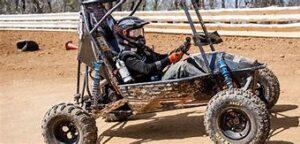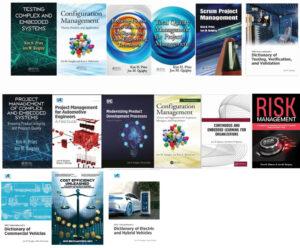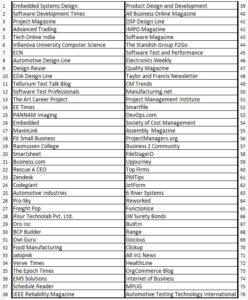Hands on Projects for Engineering Students
By Jon M. Quigley
Baja SAE Carolina 2025: Practical Projects for Engineering Students
We all need a place to practice our craft. It is not enough to have a degree in a field; it takes more than a degree, and we must learn how to apply it. The same is true for students with engineering degrees. During my degree, I had a project scoped to manufacturing and not automotive-related. I was chatting on this topic with a fellow SAE International member, and we lamented the scope of our application work. I have wanted to be in the automotive world since my days of studying the engine process. Of course, I have had a wide range of interests, including marine biology.
Few events offer engineering students the perfect combination of fun, challenge, and career-building opportunities like Baja SAE Carolina. From experience, there may be contrived events, but these education exercises have limits of the benefits. This annual competition pushes participants to design, build, and race single-seat off-road vehicles, delivering hands-on engineering experience directly translating into the real world. In today’s competitive job market, practical exposure to mechanical design, project management, and team collaboration can make all the difference.
The Baja SAE Carolina Challenge
Baja SAE Carolina tests more than just driving skills. Organized by the Society of Automotive Engineers (SAE), it emphasizes the entire engineering process:
- Design and Analysis: Teams use industry software and processes to model components.
- Fabrication: Students learn welding, machining, and assembling key vehicle parts.
- Testing and Validation: Rigorous trials ensure the vehicle can handle the roughest terrains.
In real life, employed engineers are often attached to specific domains; for example, design engineers are not the same thing as manufacturing, and even developmental testing is not the same as design engineers. The larger the organization, the more this focus, anecdotally based on my experience. Personally, my engineering career started off at a small company where I developed the embedded hardware, then created the code, and ultimately worked with manufacturing on what is required to bring the product to the customer. I am not so sure this is how things work today, even for smaller companies.
When students leave university to ply their trade, how do they know what interests them for a job? For example, I was certain I did not want to write code. Yet my first job was doing this embedded product development, and writing actual product software is vastly different from school work emulation of this. There is nothing like actually doing. I am glad things worked out the way they have, for the most part. By confronting students with real-world engineering hurdles, the competition grants them hands-on engineering experience in material selection, torque calculation, and suspension design.
Why Practical Experience Matters
Engineering principles taught in classrooms are indispensable, but they come to life when applied to tangible, real-world projects. I have told younger engineers that I know that to be a successful engineer requires as much about creativity as it does about engineering prowess. Finding ways to exercise that creativity is often a challenge. My master’s degree was in understanding product development from stem to stern, from idea to product delivery to the customer. Participating in something like Baja SAE Carolina enables students to:
- Grasp complex theories by seeing their practical outcomes.
- Develop better teamwork and communication skills.
- Hone leadership qualities under tight deadlines and budget constraints.
These lessons extend beyond textbooks, allowing students to refine their technical abilities and gain the hands-on engineering experience that recruiters and future employers highly value.
How Baja SAE Carolina Delivers Real-World Skills
Working with fellow students is not the same as working with other employees of the organization. Ideally, some of the education experience is helpful, but from experience, the proposed solution to the problem at hand may not take the form of multiple potential incarnations. Which one is the best solution? How do we know? How do we work with the team to come to a conclusion or how to get to a conclusion? I’m not sure how this works in modern education, but it was not so evident in the olden days.
- Project Management: Coordinating, budgets, timelines, and team tasks simulate professional engineering environments.
- Technical Proficiency: From CAD modeling to torque testing, each step offers growth in advanced engineering competencies.
- Collaboration and Networking: Students work with peers, advisors, and sponsors, establishing connections that benefit their future careers.
At Baja SAE Carolina, students don’t just design vehicles; they create their professional path forward and develop ideas that may be extendable.
Potential Employers
Why would a company want to participate in this Baja event through SAE International? Students likely have a different perspective than employees. From my experience, this disparate perspective can lead to interesting intellectual property. Exposing the company to these new ideas born from the student’s education can lead to radical changes, perhaps the sort of changes that lead to big things at the company. Students are not be encumbered by the “we have always done it this way” thinking. Your organization’s interactions with these students (by volunteering or sponsoring) by helping them in their work, coaching, and, more importantly, your company may be exposed to new ideas or ways of thinking. For example, the solutions they are exploring for their Baja vehicles, might be applicable if your company builds or is otherwise associated with off-road activities or durable suspension systems and drive lines.
Conclusion
As engineering students gear up for Baja SAE Carolina 2025, the importance of bringing classroom concepts into the real world becomes abundantly clear. Competitions like these provide the perfect platform to gain practical, project-based knowledge that future employers seek. The journey of designing, building, and racing an off-road vehicle cultivates confidence and capability—key traits that every aspiring engineer needs.
Learn More & Get Involved
Visit Baja SAE Carolina for detailed guidelines, volunteer information, and information on how you can support the next generation of innovative engineers.
For more information on how to become a sponsor or volunteer, please get in touch with bajasaecarolina2025@gmail.com or reach out to Jeff Poland at jpoland.sae@gmail.com.
For more information, contact us:
Follow us on social media at:
Amazon Author Central https://www.amazon.com/-/e/B002A56N5E
Follow us on LinkedIn: https://www.linkedin.com/in/jonmquigley/
https://www.linkedin.com/company/value-transformation-llc



